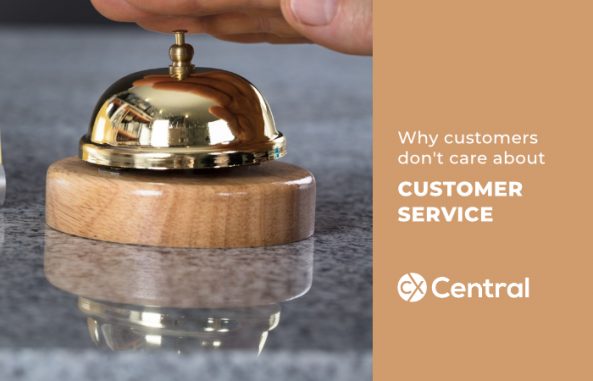
Customers don’t care about customer service.
At least, not the way you think they do.
What they care about is something a little different: They care about the feelings, the results, the impressions, the memories that come from being well served, poorly served, or that beige area in the middle.
This is a distinction that’s worth wrapping your mind around.
When you undertake a customer service initiative [Professional disclosure: Customer service initiatives, consulting, and training are what I do professionally], its odds of success are related closely to your understanding of this principle.
A successful customer service consulting project or initiative shouldn’t rely solely on goals like
“Provide world-class customer service while becoming unfailingly customer-centric companywide.”
It also depends on goals like:
“Make our customers feel better.”
(If that sounds too unpoetic to you, how about borrowing this beautiful aspiration of The Ritz-Carlton Hotel Company: “To serve even the unexpressed needs and wishes of our guests.”)
The difference here is that you’re now “keeping your eye on the why.”
And the “why” in question is the goal of adding value for customers, value that can run the gamut from hard-nosed results (“I got my invoices within 30 minutes of requesting them”) to idiosyncratically tender feelings (“I really felt cared for by that agent”).
If you keep your eye on the why, you’ll avoid the trap that so many organisations fall into, the trap of incorrectly framing this issue, of thinking that their customer actually gives a hootenanny about their company’s org chart, its staffing levels, its internal code of conduct.
Which, of course, they don’t.
To get technical here, this is why it’s a mistake to dilute a customer journey mapping initiative by making a journey map that’s essentially a subservient version of your process map or other existing organisation-centric documents.
Your customer journey map needs to be, or at least needs to start out its life being, independent from all considerations of internal processes and departments, because your customer will never have precisely the same viewpoint as the viewpoint you have internally, nor fully match up to the inevitably awkward divisions of task in your organisation. (Of course, once it’s complete, your customer journey map can and should be overlaid on your process map to see the interplay between the two.)
To get un-technical again, an employee manning a register will give better service if she thinks of her goals as:
– “connecting empathically with the customer who’s in front of me”
– “matching my customer’s pacing”
– “anticipating my customer’s needs,”
rather than as “providing world-class service” or “acting in a customer-centric manner.”
Again, this may sound like an exercise in hairsplitting. But try it on for size within the confines of your brain.
And then see how it affects your success in the real world.
I think you’ll be pleased. I know that your customers will be.
Next steps
- Contact Centre CX – its all about the resolution
- 3 Key ingredients for great customer experiences
- Customer Service Recovery: Apologising to customers without alienating your employees.
Originally published in Forbes.com


Be the first to comment